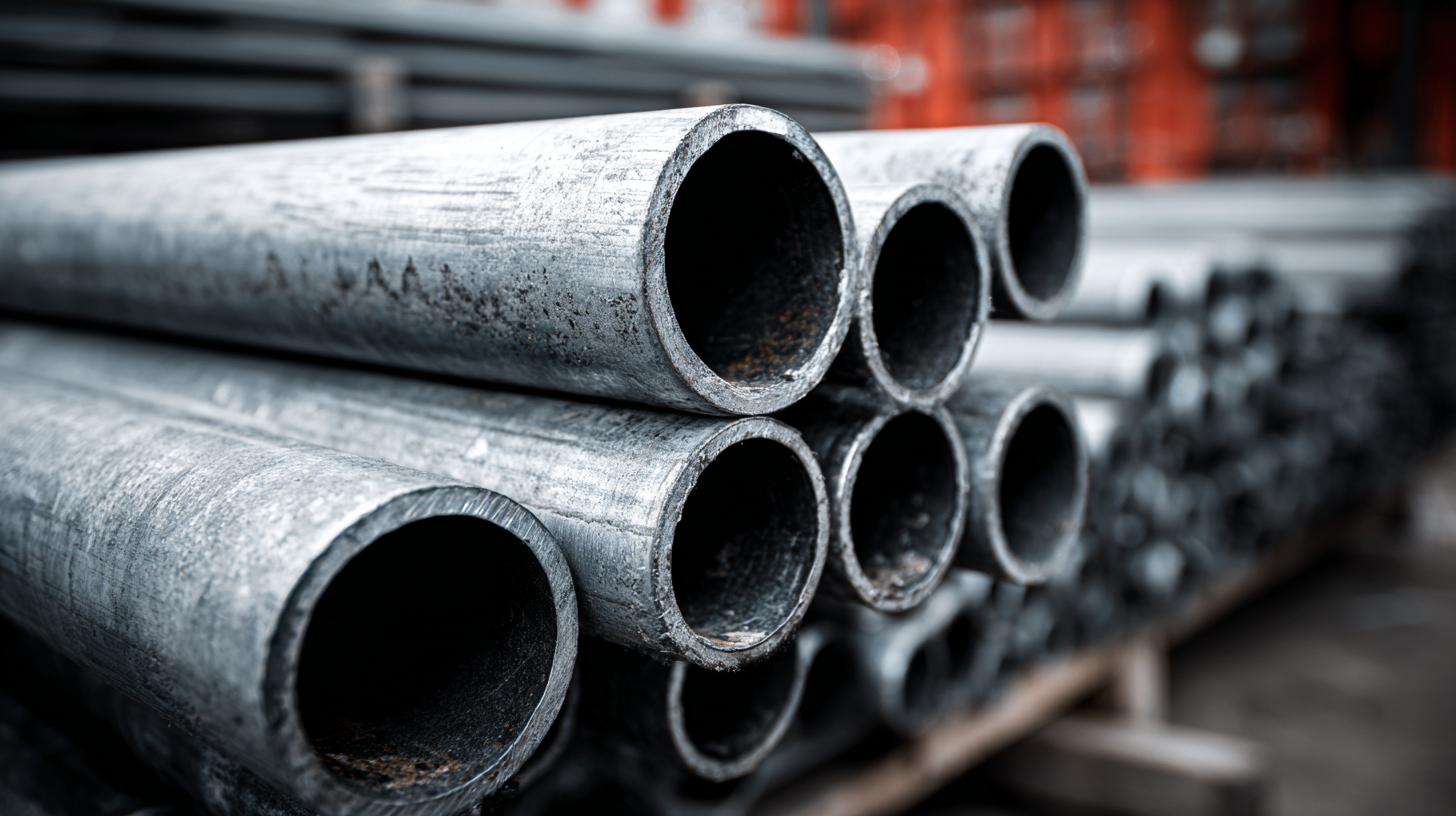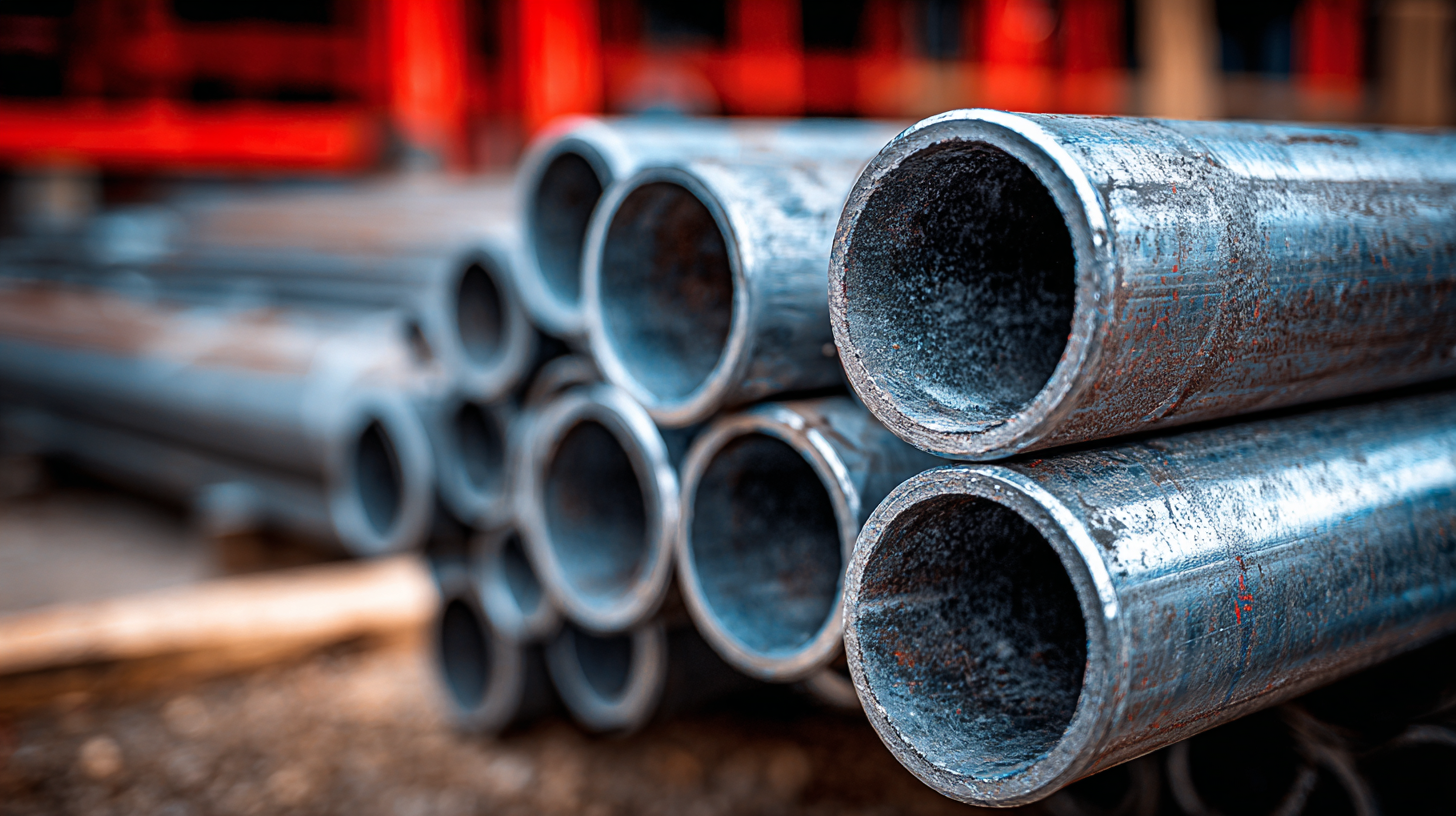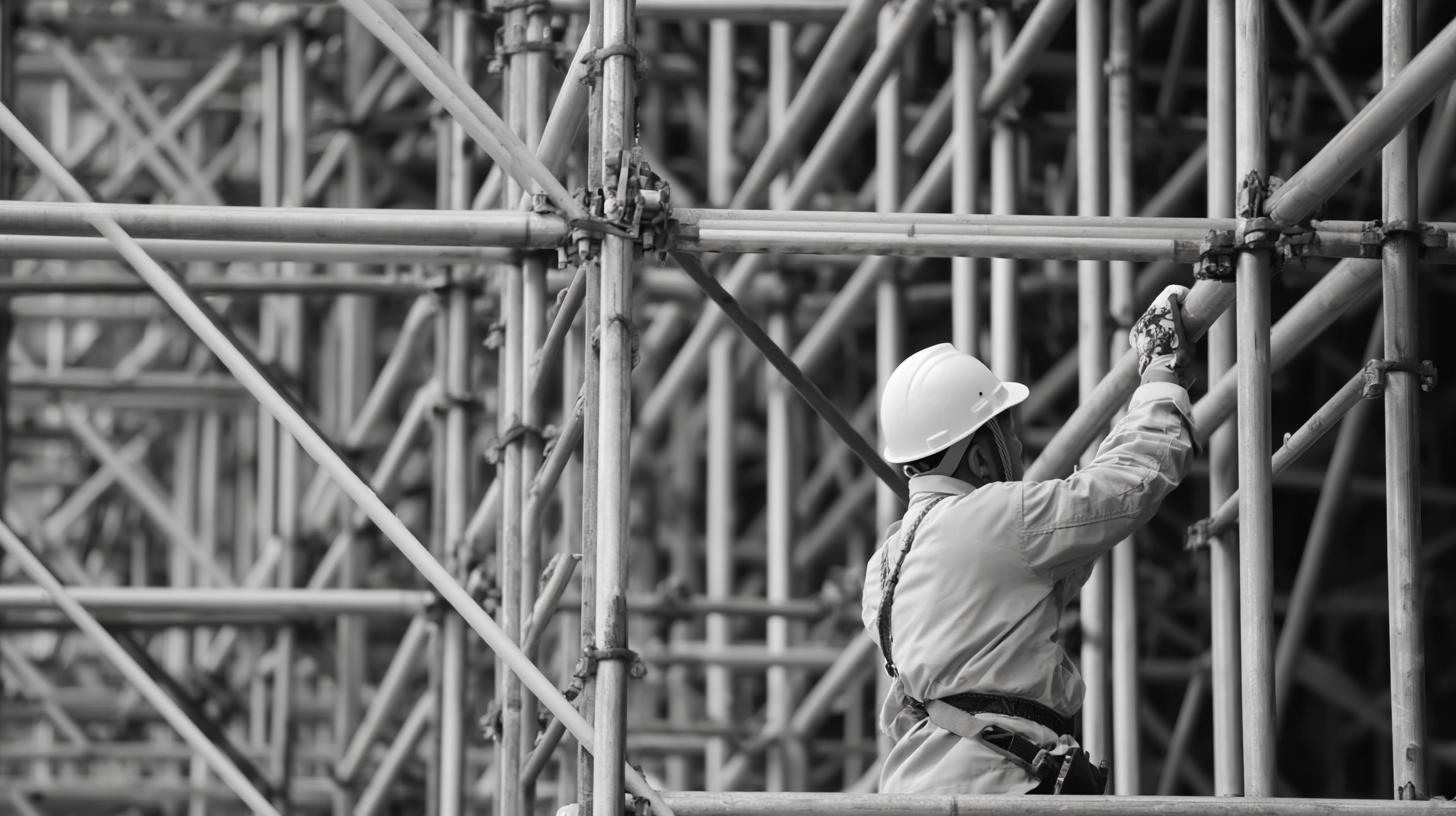 +86 18531741341
+86 18531741341
Leave Your Message
The construction industry continues to evolve, with scaffold tubes playing an essential role in enhancing safety and efficiency on job sites. According to the 2021 Global Construction Survey, the scaffold tube market is projected to grow at a compound annual growth rate (CAGR) of 5.2% between 2021 and 2026, underscoring their importance in various construction applications. Scaffold tubes are not only versatile in design but also provide critical support in diverse projects, ranging from residential buildings to large-scale infrastructure developments. The benefits of using high-quality scaffold tubes are manifold, including improved worker safety, increased load-bearing capacity, and enhanced adaptability to different construction environments. As the demand for innovative construction solutions rises, understanding the applications and advantages of scaffold tubes becomes paramount for industry professionals aiming to optimize their project outcomes.

Scaffold tubes play a vital role in modern construction practices, providing the essential support and stability needed for various projects. Their versatility ensures that they can be adapted to meet the unique requirements of different construction environments, contributing significantly to safety and efficiency on the job site. As the construction industry continues to evolve, the significance of high-quality scaffold tubes becomes increasingly apparent, especially in light of the latest trends in modular construction and site efficiency.
To maximize the benefits of scaffold tubes, it is important to consider the following tips. First, always ensure that scaffold tubes are thoroughly inspected before use to guarantee structural integrity and safety. Regular maintenance and replacements should be part of any construction project’s routine to avoid potential hazards. Additionally, proper training for workers on the correct assembly and usage of scaffold systems is crucial. This not only enhances safety but also improves site productivity, which is essential for meeting tight deadlines and maintaining project momentum.
Furthermore, embracing modern methods of construction, such as prefabrication and modular building strategies, can streamline the scaffold setup process, leading to significant time savings. The refined focus on site speed and adaptability can help tackle challenges posed by external factors, ensuring that projects remain on schedule regardless of industry fluctuations. Efficient scaffold use thus becomes a key component in achieving success in contemporary construction projects.
 Scaffold tubes are fundamental components in the construction industry, known for their versatility and crucial role in ensuring safety and efficiency on job sites. These tubes are typically made from high-strength steel, offering a robust structural solution that can support various loads. According to a report by MarketsandMarkets, the global scaffolding market is projected to reach $3 billion by 2025, driven by the increasing demand for construction activities worldwide. This growth underscores the necessity of using high-quality scaffold tubes that meet rigorous safety standards and enhance project performance.
Scaffold tubes are fundamental components in the construction industry, known for their versatility and crucial role in ensuring safety and efficiency on job sites. These tubes are typically made from high-strength steel, offering a robust structural solution that can support various loads. According to a report by MarketsandMarkets, the global scaffolding market is projected to reach $3 billion by 2025, driven by the increasing demand for construction activities worldwide. This growth underscores the necessity of using high-quality scaffold tubes that meet rigorous safety standards and enhance project performance.
Key features that make scaffold tubes essential include their lightweight nature and corrosion resistance, which facilitate easy handling and prolonged durability. For example, galvanized steel tubes are popular for their ability to withstand harsh environmental conditions, significantly reducing maintenance costs. Furthermore, the Occupational Safety and Health Administration (OSHA) emphasizes the importance of selecting the right materials to prevent accidents on construction sites; in fact, around 60% of scaffold-related injuries can be attributed to the failure of scaffolding systems. Therefore, the strategic use of high-quality scaffold tubes not only enhances operational efficiency but also ensures compliance with safety regulations, making them indispensable in the construction industry.
Scaffold tubes have become integral to the construction industry, serving multiple innovative applications that enhance safety and efficiency on job sites. These adaptable components can be used not only as main structural supports in scaffolding systems but also in creating temporary walkways, platforms, and even art installations. Their lightweight yet robust design allows for easy handling and versatility, making them a favorite among contractors looking to maximize both safety and productivity.
In addition to traditional scaffolding uses, scaffold tubes are increasingly being repurposed for creative and functional applications. For instance, they are often utilized in the construction of modular buildings, providing a skeleton that supports various materials while remaining highly adaptable to project changes. This versatility extends to projects involving heavy machinery, where scaffold tubes can be configured to create barriers or support frames. With their ability to meet the dynamic needs of construction sites, scaffold tubes are proving to be a vital asset in driving innovation and efficiency across diverse construction projects.
When it comes to selecting scaffold tubes for construction projects, material choice can significantly impact performance, safety, and cost-effectiveness. Common materials include steel, aluminum, and fiberglass, each presenting unique advantages and drawbacks. According to a report by the Global Construction Equipment Market, steel tubes remain the industry standard due to their strength, durability, and overall cost-efficiency. However, aluminum options are gaining popularity, particularly in projects requiring mobility and lightweight materials, boasting a weight reduction of up to 50% compared to steel.
When selecting the right scaffold tube material, it's essential to consider the specific project requirements. For example, fiberglass scaffold tubes are ideal for environments with electrical hazards, as they are non-conductive. However, they typically come with a higher price tag. Therefore, evaluating project conditions against material properties is crucial.
**Tip:** Always consult with structural engineers to determine the most suitable scaffold tube material for your project's needs. Additionally, consider the load capacity and environmental factors that may affect material performance. Regularly reviewing new industry standards, such as those from OSHA, can also ensure compliance and safety throughout the construction process.
| Material Type | Weight (kg/m) | Load Capacity (kN) | Corrosion Resistance | Cost (per meter) |
|---|---|---|---|---|
| Steel | 4.0 | 35 | Moderate | $3.50 |
| Aluminum | 2.5 | 25 | High | $5.00 |
| Fiberglass | 3.0 | 15 | Very High | $7.00 |
| PVC Coated Steel | 4.2 | 30 | High | $4.00 |
The construction industry is undergoing significant transformations, spurred by innovative technologies and evolving trends in scaffold tube applications. Recent market research indicates that the global scaffolding market is projected to reach approximately $70 billion by 2026, growing at a compound annual growth rate (CAGR) of around 6%. This growth is largely attributed to the increasing demand for safe and efficient construction sites, where reliable scaffold systems play a crucial role.
Emerging technologies, such as smart scaffolding solutions, are enhancing the functionality and safety of scaffold tubes. Features like load sensors and real-time monitoring systems are becoming standard, allowing project managers to track structural integrity and worker safety dynamically. A report by Global Market Insights highlights that adopting these advanced technologies could reduce workplace accidents by up to 30%, making scaffolding not only more efficient but also substantially safer for workers. With sustainability at the forefront of construction practices, eco-friendly materials for scaffold tubes are becoming increasingly popular, aligning with the industry's direction toward greener building techniques.

